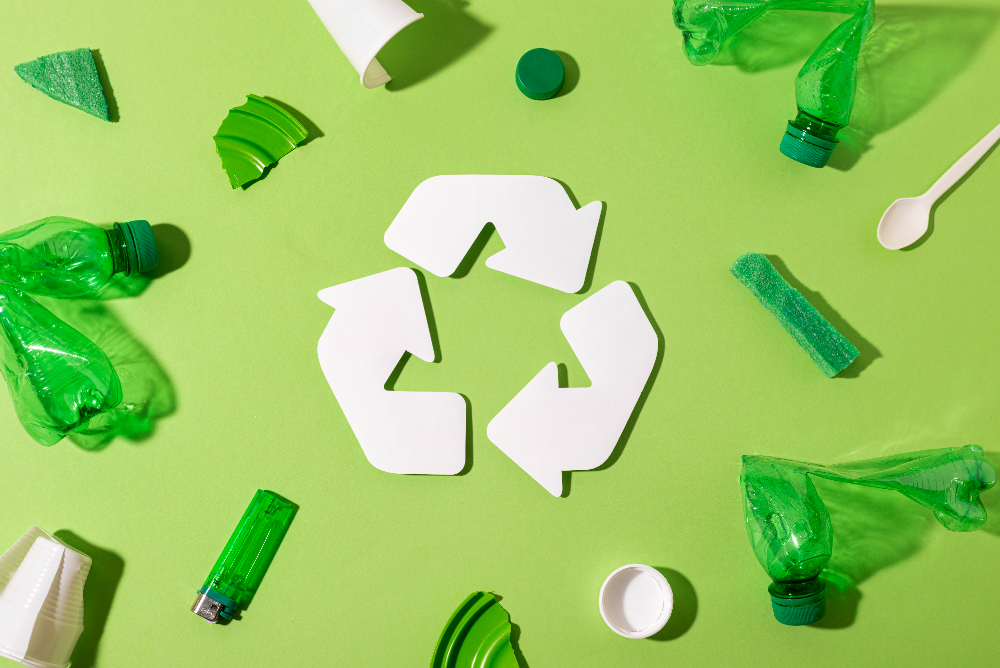Circular economy
Circular economy principle
Restoration
Why is the Circular Economy principle important?
Unlike the Linear Economy model, where products are used only once and generate a lot of waste, the Circular Economy focuses on creating maximum value from the minimum amount of raw materials and resources consumed.
With our help, your company can do more with fewer resources throughout the supply chain.
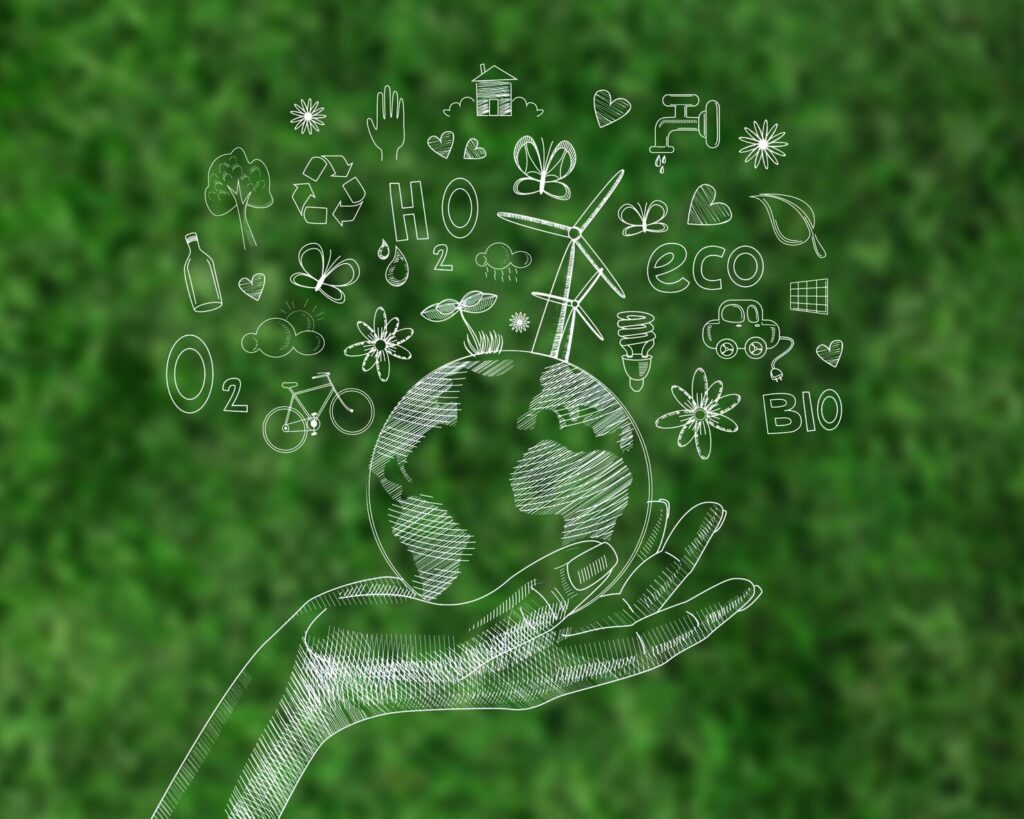
Recycling
One of the most rational ways of using certain material waste is recycling the processing of materials in order to obtain other materials from them, thus returning them to the active material cycle.

Plastic packaging
Plastic products and packaging, unlike glass, paper and metal materials, are the “newest”. Today, 90% of plastics are obtained from petroleum products. About 4% of all oil consumption is used to produce plastic products. Oil is a non renewable natural resource. An important property of polymers is their high mechanical strength. They are thermoplastic, when heated they first become soft, gradually begin to melt, forming a viscous flowing liquid, but it cannot be distilled. They are impermeable to water and gases, chemically stable. They can be used to make various parts for chemical equipment, as well as tanks for storing and transporting chemically hazardous liquids. Plastics are also widely used in other areas of life, such as industry, agriculture, especially in the production of packaging material. The used packaging material, PET, which is used in the production of beverage bottles, is the second most valuable material after aluminium.
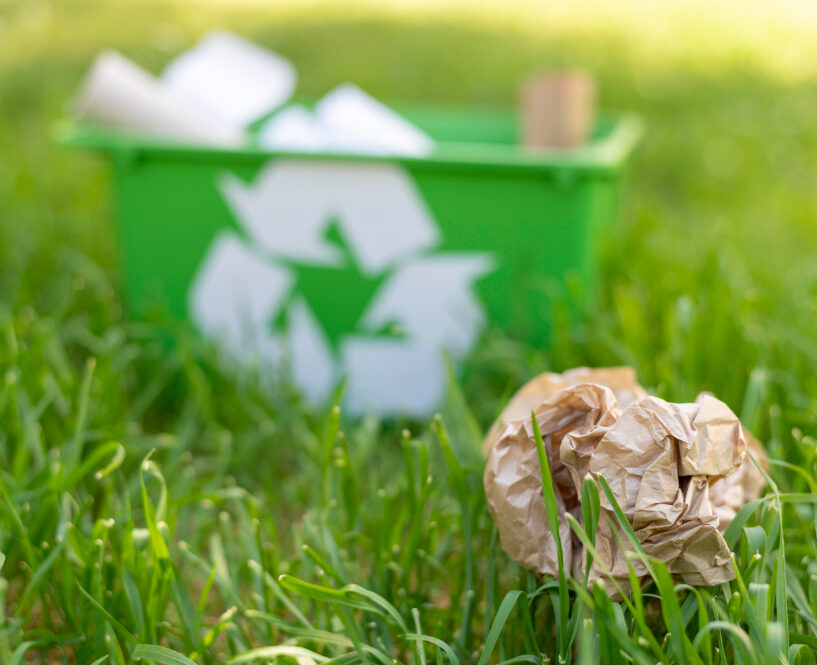
Plastic is used for:
The impact of plastic on the environment
Polyethylene bags are readily available, so consumers use them for a short time. Used bags end up in large quantities in the trash or in the environment. Environmental experts admit that polyethylene bags not only spoil the visual appearance of city streets, but also affect the environment and the life in it. Plastic waste kills many birds and marine mammals every year. In addition, as the dead animal decomposes, the dangerous plastic continues to claim more and more lives. Also, in landfills, many animals get entangled in polyethylene bags and die.
Researchers have identified several garbage patches covering an area of the ocean twice the size of the United States. They are mostly plastic waste that has been carried into one place by ocean currents. About a fifth of this waste (a total of about 100 million tons) enters the ocean from ships and oil platforms. The rest comes from land .

Let's save the planet together!
How can you save the planet through your daily actions?
We are responsible for our well-being and the environment, both collectively and individually. It is important to remember that making positive changes does not always mean making drastic changes to our habits. Environmental protection is one of the most important areas to focus on. In addition, it should be noted that the impact of the environment on health and quality of life in general is very significant. Every day, each of us can act in different situations to protect the planet together:
environmentally friendly mobility options (vehicle exhaust gases, especially carbon dioxide (CO2) emissions, pose a serious threat to the development of the greenhouse effect);
energy efficient solutions for housing.
Waste reduction;
choosing organic and local food products, etc.
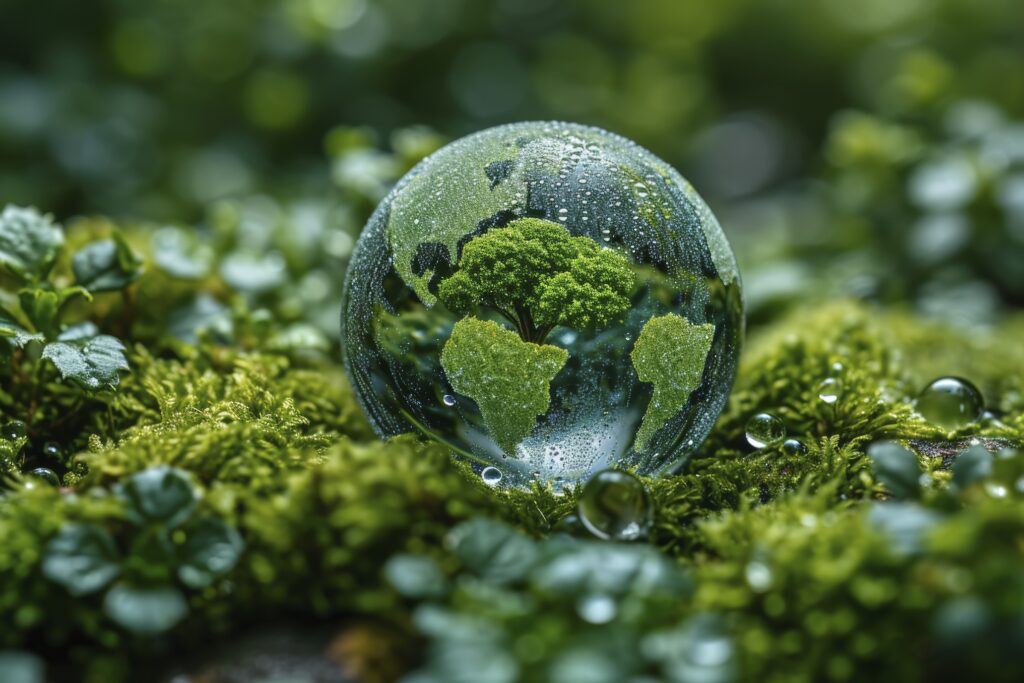
Practical examples
Companies
Which companies are successfully implementing circular economy principles?
Many companies around the world have successfully implemented circular economy principles, such as through resource reuse, recycling, sharing, and repair services.
Some of the successful examples are:
“Patagonia” is one of the leading clothing brands to embrace the principles of a circular economy. They use recycled materials, such as PET plastic from bottles, and offer free repair services to extend the life of their products.
For example, “Worn Wear” is a brand program that allows consumers to sell or buy used products, thereby reducing waste.
“IKEA” has committed to switching entirely to renewable or recycled materials by 2030. They have implemented furniture buy back programs in several countries, offering consumers the opportunity to sell their used furniture so it can be recycled and resold. IKEA is also investing in research and development to make products more recyclable and making changes to its manufacturing processes to reduce waste.
“Nike” has introduced the Nike Refurbished program, which offers refurbished shoes at a lower price. The company also uses recycled materials in its shoes and apparel, such as reusing materials from old shoes to create new products.
“Dell Technologies” is one of the largest technology companies to embrace the circular economy. They have designed sustainable computers that use recycled materials, such as ocean plastics and old electronic devices. Dell Technologies also offers a buyback program, where old products are returned for recycling or remanufacturing.
“TerraCycle” is a company that specializes in recycling hard to recycle waste. It works with businesses to collect and recycle waste that would otherwise end up in landfills, such as packaging that is not typically recyclable.
“Apple” has a program in place to collect old devices so they can be recycled or repaired. The company also uses recyclable materials like aluminium and gold to make new products.
These companies are great examples of how circular economy principles can be implemented in various industries, not only reducing waste and increasing recycling, but also creating new opportunities and value in everyday life. Such practices can serve as inspiration for other companies looking to improve their sustainability performance.
Products
The company “BVC Recycling” offers HDPE and LDPE granules, which are a high-quality
raw material for plastic production.
HDPE Granules
HDPE (High Density Polyethylene Plastic) granules are one of the most commonly used materials in plastic production. They are derived from polyethylene polymer and are used in various industries such as packaging, construction, automotive, medical and many others.

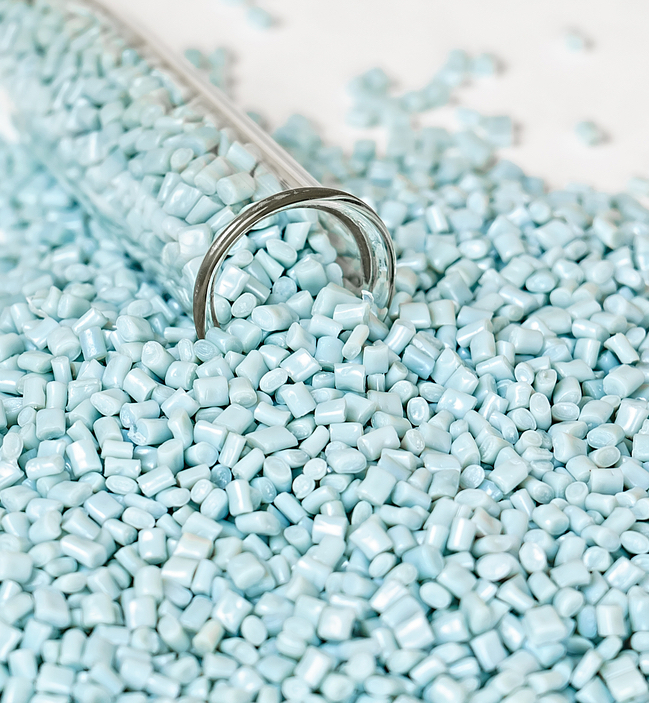

Features and benefits |
|
Durability and hardness | HDPE pellets are known for their high mechanical strength, which allows products to maintain their shape and functionality for a long time. |
Anti-corrosion properties | HDPE is highly resistant to chemicals, so it is also used for products exposed to harsh environmental influences. |
Longevity | The material is highly resistant to wear and weather conditions, thus guaranteeing long-term performance. |
Environmentally friendly | HDPE is a 100% recyclable material, making it a sustainable choice, supporting environmentally friendly production and recycling. |
Application
HDPE granules are used to produce various products, such as:
Plastic pipes and accessories.
Packaging materials (e.g. bags and bottles).
Construction materials (insulation materials, crushed stone mixtures). Transport and automotive components.
Industrial and agricultural goods.
Why choose HDPE pellets produced by “BVC Recycling”?
When choosing HDPE (high density polyethylene) pellets produced by BVC Recycling, it is important for companies and manufacturers to understand why they are best suited for specific purposes.
Here are some advantages of choosing our HDPE granules:
High quality and purity
Our pellets are manufactured from the highest quality raw materials, ensuring excellent mechanical strength and durability.
Strict quality control standards are followed during their production. Sustainability and contribution to the environment
HDPE granules are recyclable, helping to reduce plastic waste and promote a circular economy. Our HDPE granules made from recycled materials demonstrate BVC Recycling’s commitment to the environment.
Wide application
HDPE granules are suitable for a variety of industries, including the production of packaging, pipes, containers, automotive parts and other plastic products. HDPE granules provide excellent physical properties such as chemical resistance, impact resistance and UV resistance.
Personalized solution
We offer customized granules solutions according to the specific needs of our customers.
Technical support and consultations
The BVC recycling team provides professional support and helps you choose the most suitable type of LDPE granules for specific needs.
Efficiency and economy
The high quality and consistency of BVC Recycling HDPE pellets ensure easy and efficient processing, reducing production costs and time. The HDPE granules we produce are designed to reduce production defects and optimize the properties of the final product.
Proven reputation
Our HDPE granules have gained trust in the domestic and international markets due to their reliability and reputation gained over many years of operation.
LDPE Granules
LDPE (low density polyethylene) granules are a versatile and widely used plastic material known for its flexibility, durability and easy recycling. This material is suitable for various industries and products due to its properties and diverse applications. More



| Features and Benefits | |
|---|---|
Flexibility and softness | LDPE granules are ideal for the production of thin and flexible materials such as films and bags. |
| Impact resistance | LDPE granules are resistant to mechanical stress, ensuring longevity of their end products. |
| Chemical resistance | LDPE granules are resistant to many chemicals, which makes them a good choice for packaging and other industrial applications. |
Water resistance | LDPE granules are used to produce waterproof products. |
Easy recycling | Easy heat treatment and molding make LDPE pellets a popular material among both beginners and experienced manufacturers . |
Possible areas of application of LDPE granules | |
Film and packaging materials production | LDPE granules are suitable for food films, industrial packaging, and plastic bags. |
Pipe and tank manufacturing | LDPE granules are used to produce flexible pipes and containers. |
| Household goods | LDPE granules are used for manufacturing, they are suitable for various products, such as toys, kitchen utensils and household items. |
Industry needs | LDPE granules are used for protective materials, electrical insulation and technical packaging. |
LDPE granules provide stable quality and high processing efficiency, making them a reliable choice for both mass production and specific product creation. The material created from LDPE pellets is also recycling-friendly, meeting today’s sustainability requirements. By choosing LDPE granules, you get a material that combines functionality, sustainability and durability, ensuring a quality result for your products.
Why choose LDPE granules produced by “BVC Recycling”?
When choosing LDPE (high density polyethylene) granules produced by BVC Recycling, it is important for companies and manufacturers to understand why they are best suited for specific purposes.
Here are some advantages of choosing LDPE granules produced by our company BVC Recycling:
High quality
“BVC Recycling” LDPE granules are produced according to the highest industry standards, ensuring their purity, homogeneity and compliance with technical requirements. This guarantees high quality end products.
Wide range of applications
The LDPE granules we produce are suitable for various industries, such as packaging production, film, plastic bags, pipes or other products.
Environmentally friendly approach
BVC Recycling’s LDPE granules are produced from recycled materials, allowing customers to choose sustainable solutions that help reduce environmental impact and promote an overall circular economy.
Stable supply chain security
BVC Recycling offers reliable and timely delivery solutions that help customers avoid production interruptions and maintain continuous operations.
Technical support and consultations
The BVC recycling team provides professional support and helps you choose the most suitable type of LDPE granules for specific needs.
Product customization to customer needs
BVC Recycling offers individual solutions that meet customer specific requirements.
Long-standing experience in the industry
BVC Recycling’s reputation and experience in the production and sale of LDPE granules demonstrate reliability and professionalism.
By choosing BVC Recycling LDPE granules, our customers receive high quality and environmentally friendly products with excellent technical support, customizable solutions, and a reliable supply chain everything they need for successful production and business development.
Current Events
Current trends in the circular economy include:
A shift from a linear production and consumption model to a regenerative and restorative model that focuses on creating and preserving economic value while addressing global ecological challenges such as climate change and biodiversity loss ( European Economic and Social Committee ).
Focusing attention on the bioeconomy as one of Latvia’s development opportunities on the path to more sustainable and efficient use of natural resources ( Ministry of Agriculture).
Initiatives by companies and organizations to implement circular economy principles, for example in waste collection, sorting and recycling processes, as implemented by the company “BVC Recycling”. These activities demonstrate a growing understanding and efforts to promote the implementation of circular economy principles both in Latvia and the European Union, to ensure sustainable development and efficient use of resources.
Are you looking for environmentally friendly materials?
Resources and tools
Policies and regulations
Key policy and regulatory directions in the circular economy:
Key policy and regulatory directions in the circular economy:
Resource management and eco design (sustainable raw materials, resource efficiency requirements).
Waste reduction and recycling (mandatory recycling targets, extended producer responsibility (EPR), restrictions on single use products).
Promoting circular business models (financial incentives for companies, creation of transition funds.
Promoting sustainable consumption (consumer education, product labelling systems). International cooperation and standards (global initiatives, resource traceability). Public procurement (green procurement).
Regulatory instruments to achieve climate goals (carbon taxes and quotas, support for innovative technologies).
